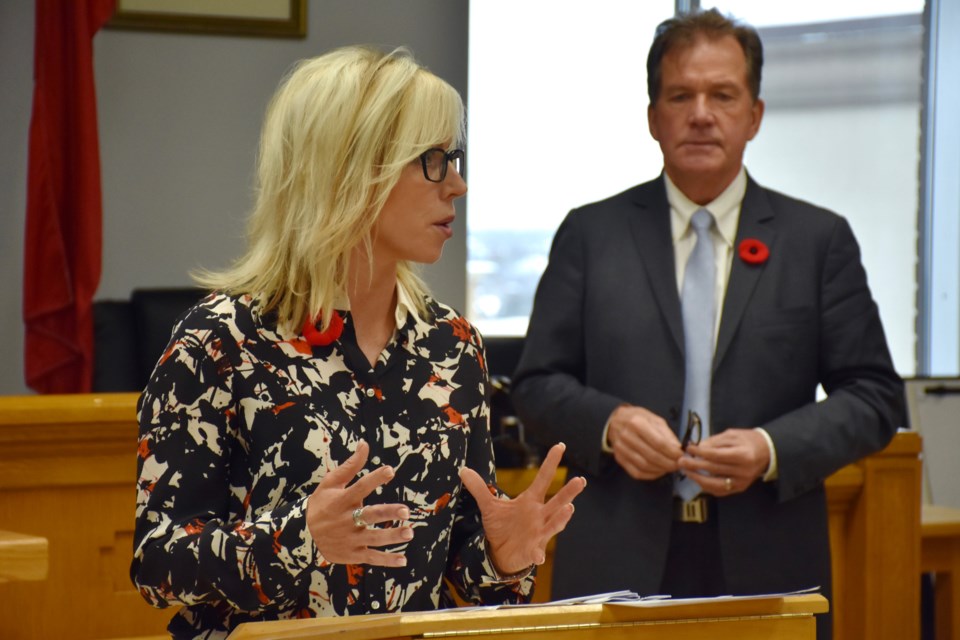Work to create a Community Safety and Well-Being Plan is underway in Timmins.
The plan, said Mayor George Pirie, will be a “working, living, evolving plan with defined objectives and actionable items on the ground.”
“Siloes will have to be broken down as we move from being reactionary in nature to a system which is focused on up-stream, early preventative multi-sector collaborative initiatives to make our city a safe and healthy place to live for all of our citizens,” he said.
The Police Services Act requires municipalities to have a Community Safety and Well-Being Plan by Jan. 1, 2021.
It will identify priority risk factors, strategies to reduce the potential risks, and set measurable outcomes.
In October, council awarded a contract to Trimeda Consulting Inc. to develop the local document.
“In Timmins, we are seeing changes to our community that are making people feel less safe – the growing opioid crisis, street homelessness and increasing levels of mental health issues,” said Pirie.
He noted the stats for local harm reduction and mental health visits.
In 2018, the Porcupine Health Unit distributed 310,798 needles at its sites, including satellite offices. From January to June of this year, they distributed 193,164 needles.
Last year, 808 naloxone kits were handed out. In the first six months of 2019, 1,105 kits were distributed.
The number of mental health visits to Timmins and District Hospital's emergency department is also increasing.
In 2017-18, there were 1,676 visits. In 2018-19 there have been 1,858 visits.
Trimeda president Melanie Verreault said the advisory committee, which includes a variety of community stakeholders, will start meeting next week.
“Along with the advisory committee, together we will work at identifying what those gaps are and be able to see if we can make new collaborations, new partnerships together that can continuously reduce the situation that is going on in our community,” she said.
The advisory committee includes representatives from the Porcupine Health Unit, City of Timmins, Timmins Police, local schools boards, Timmins and District Hospital, the Business Improvement Association (BIA), Cochrane District Social Services Administration Board (CDSSAB), Timmins Native Friendship Centre, and more.
Verrault said there will be a survey for community members to fill out, and public engagement sessions. It will be ready to launch by the end of 2020.
There are already projects in the community that fit into the plan.
CDSSAB CAO and Living Space chair Brian Marks talked about a community feedback initiative being rolled out at the emergency shelter.
He said the feedback protocol is a chance for people to comment through their website, email, and a toll-free number.
A Central Sharp Reporting Process has also been rolled out.
“Our business owners downtown live and breathe this crisis basically every day," said Jamie Roach, BIA board chair.
He said it's a fantastic initiative that is very tangible.
If you see a needle, you can call 705-531-7233 or email [email protected] to let outreach workers know where it is. It will be picked up and safely disposed of by outreach workers from Living Space or the Porcupine Health Unit.
Timmins Police also recently rolled out a Mobile Crisis Rapid Response Team.
The initiative is a partnership between the local service and the hospital. It pairs officers with mental health workers and is available daily from 11 a.m. to 11 p.m.
“For us in policing, we realize that we’re only simply one cog out of this wheel and the strength of the wheel is with all of our community partners here. For far too many years we really truly believed that we could arrest our way out of this problem and it’s pretty clear now, it took us some time to realize it, but we can’t,” said Timmins Police Chief John Gauthier.
The new partnership is one initiative he noted as being proactive rather than reactive.



